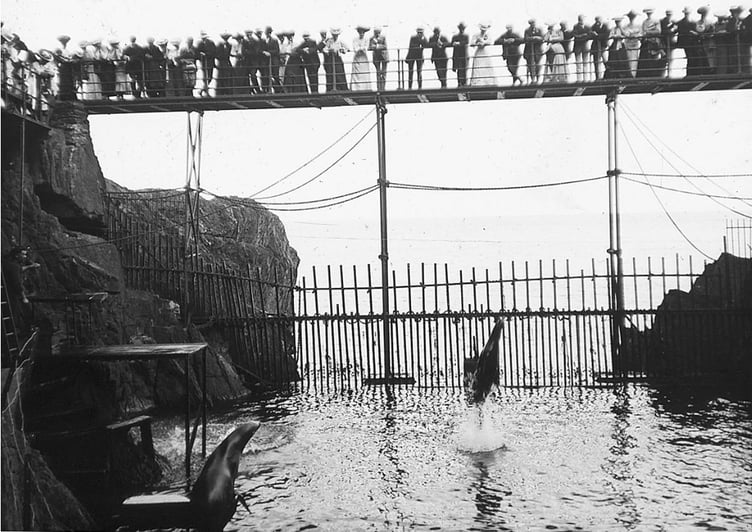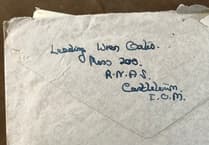One of my favourite things about our island is its glens.
They, together with the abundant nature of hills and beaches, the traditional summer resorts of Peel and Port Erin, and our unique heritage transport infrastructure, all help make our island home the special place it is.
Combine that with Viking, Celtic, Victorian and Edwardian history and so many other aspects, and we really have a unique place - for those who live here and those who come to spend time with us. Imagine life in a hectic big city, the daily grind of the commute, and the challenges of an uncertain world.
How refreshing it would be to come and spend time in one of our timeless Manx glens and everything else we have to offer, where batteries can be recharged with a gentler pace of life.
Today I will look at just one - Groudle Glen. I sincerely acknowledge the work of Suzanne Cubbon, from her book ‘Manx Glens – A Stroll Through History’, for most of the information used.
Her book, published in 2004, explores the history and significance of the Manx glens, offering a journey through time and some of the stories behind these unique landscapes. It is still available at various outlets, and I recommend it to anyone.
For some of us, Groudle Glen - or more specifically the Groudle Glen Hotel - was the ‘go-to venue’ back in time, with mine host ‘Ma’, a lovely lady.
Amongst other things, regular discos attracted large numbers of partygoers. In a time before drink-driving legislation, cars would be parked right up the road, having transported their occupants to the hotel - and often home afterwards. This was before the concept of self-driving cars, which would have seemed unreal at the time.
Groudle Glen is located between the parishes of Onchan and Lonan, less than three miles from Douglas, accessible on foot, by electric tram, or by car.
The Glen has four entrances: one at Whitebridge on the main road between Onchan and Laxey; one at the tram stop next to the former hotel; one from around the hairpin corner, which is the entrance to Lhen Coan; and finally, directly from the beach. The Glen extends about one mile from the sea.
This area was originally known as Escalada, and later as Eskadale. The harbour at the mouth of the Glen was known as Escadalavik (Norse).
In the year 1890, an enterprising businessman named Richard Maltby Broadbent, who owned Bibaloe Beg Farm in Onchan, purchased the lease for the whole of the Groudle Glen area from the Howstrake Estate. At that time, the glen was in its natural state with grass, ferns, and very few trees. Indeed, when the glen first opened to the public, it was known as ‘The Fern Glen of the Isle of Man’.
This was at the height of growth in the tourist industry, and Broadbent saw the potential attraction of having a hotel and a glen with romantic walks and amusements.
He also knew that the newly constructed electric railway - this year celebrating 135 years - would be passing by.
Broadbent, in discussions with the railway developer Mr Saunderson, agreed that land could be taken over by the Douglas Bay Estate Company to allow the railway line to pass opposite the site of the proposed hotel.
He also agreed to pay a percentage of the gate takings from the Glen to the railway company. Construction of the hotel, designed by renowned architect Baillie Scott at a cost of £1,500, began immediately, and the doors were opened to the public on July 7, 1893.
Next door to the hotel was a little café, which had originally stood on the end of the iron pier in Douglas. It was moved to Groudle when the pier at the bottom of Broadway was dismantled in 1893.
The pier, 1,000 feet long and constructed of cast iron in 1869, featured an elegant entrance with steps, lampposts, and a pavilion with waiting and refreshment rooms at the pier head. Its demolition came about to make way for the widening of the promenade.
It had been officially opened by Lady Loch, wife of the Lieutenant Governor.
The development of the Glen continued with trees being planted and trademark rustic bridges built across the river. A pathway was made from the entrance beside the hotel to a rocky inlet approximately half a mile around the headland.
The inlet was a perfect natural bowl, sheltered from the winds, and it was decided - in less enlightened times - to use it to its full potential by creating a sea lion pool. To achieve this, the inlet was dammed and closed off, creating a pool area in which to house not only sea lions but even, unbelievably with today’s perspective, a polar bear.
Eleven sea lions were purchased from California, but tragically, five perished on the journey to the island.
Only two of the remaining six survived beyond the First World War. They were named Tommy and Jenny.
The sea lions were looked after by Gaby Dobson, who lived with his family in a stone-built house on the beach.
Eighteen stones of fish were required to feed the sea lions each week.
Another ‘amusement’ - which would horrify us today - was the sight of two brown bear cubs chained to the rocks. They even featured on postcards.
The Glen had at its entrance a stall selling a variety of souvenir items, followed by the ticket office and turnstile. On turning right, the pathway led to a fortune teller (Mrs. Hornbury), a darts stall run by William Hall, and then onwards to the little wheelhouse and dance floor, where a small band played during the day and most evenings.
Also in the Glen was an aviary, lily ponds, and a bowling green. Near the beach were swings and roundabouts for the children.
Broadbent then hit on the idea of introducing yet another attraction: a narrow 2 ft gauge railway to run from the inner Glen to the sea lion pool - or, to use the successful tagline of the wonderful Groudle Glen Railway supporters of today, ‘The line that goes uphill to the sea’.
The little railway was completed in 1896 using entirely local labour.
Shortly after, Broadbent took delivery of a small locomotive, aptly named ‘Sea Lion’, along with three small coaches which had arrived from England.
It was to be advertised in the local press and guidebooks as the ‘World’s Smallest Railway’. On July 20, a special trip on the ‘Sea Lion’ was arranged for local dignitaries and the press - followed, of course, by lunch at the Groudle Hotel.
Business boomed. At the height of the summer seasons, the little train was making up to 40 trips a day along the three-quarter-mile line. Passengers could also obtain refreshments at the Sea Lion Café, which was on the hill at the pool end of the track. Next week, I will continue its story to the present day.
The Glen also had a water wheel and wheelhouse, which were first operated in about 1895. The wheel provided power for the Glen’s fairy lights, and water was pumped up the Glen to the hotel at the top. Later in its life, it was to feature in the well-known 1986 BBC TV series Lovejoy... more next week!


-(1).jpeg?width=209&height=140&crop=209:145,smart&quality=75)

